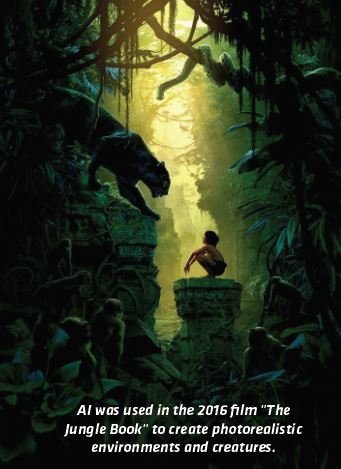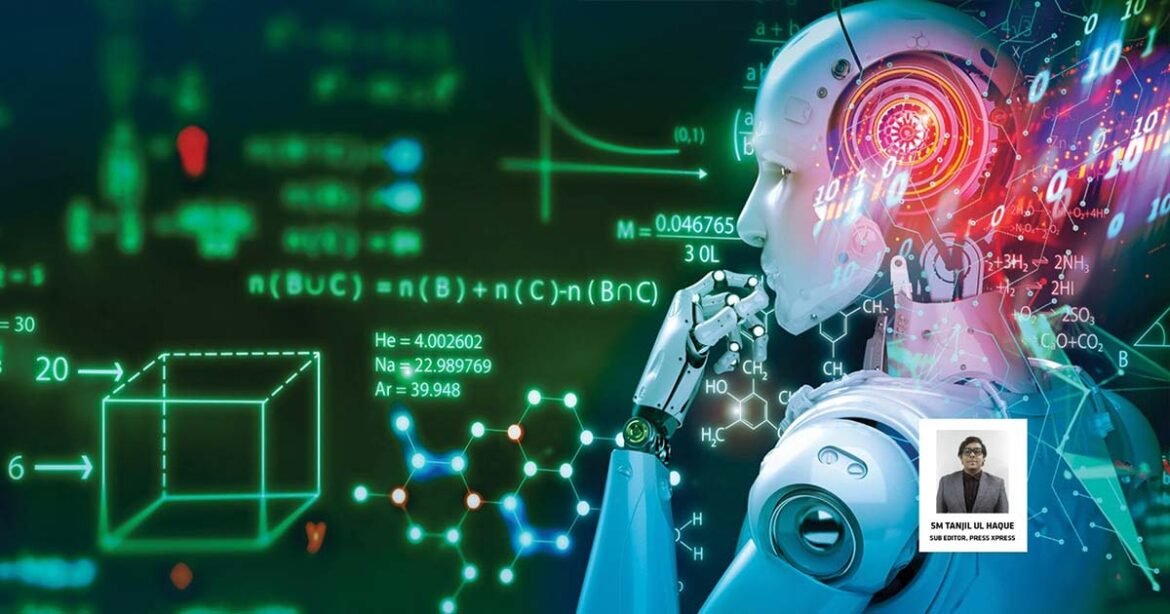The advancement of AI in recent years has been astonishing – leading to revolutionary changes in a number of sectors. However, as AI continues to become more sophisticated, the question arises about its growing usefulness with regard to human creativity and whether it will eventually outpace the latter. The topic has become even more relevant as AI is rapidly changing the world and shaping the future. In the light of these developments, it is crucial to examine the interplay between AI and human creativity and determine whether we are facing the risk of losing one of the most dominant human capacities to machines, writes.
In recent years, the rapid advancement of technology has made the connexion of human creativity and artificial intelligence (AI) a highly relevant and pressing issue. As AI becomes increasingly sophisticated, it prompts us to consider its potential impact on human creativity and what role it will play in shaping up our future. While AI has the capability to perform a multitude of tasks, including creative arts, it still lacks the ability to fully replace human creativity.
The uniqueness and originality that is inherent to human creation is something that AI has yet to fully replicate. Thus, the relationship between AI and human creativity remains a complex and multi-layered topic that continues to be explored and discussed by experts in the field. In addition to its limitations in replicating human creativity, there are also ethical concerns surrounding the use of AI in the creative arts.
YOU CAN ALSO READ: CHATGPT: GROUNDBREAKING OR HYPE?
Some worry that the increasing reliance on AI may lead to a loss of authenticity in art, music, and other forms of creative expression. There are also concerns about the impact of AI on employment in the creative industries, as automation may lead to the replacement of human workers. Additionally, there are questions about the ownership and control of AI-generated works, as well as the responsibility that lies with creators and manufacturers in the event of negative consequences. These are all important considerations that must be taken into account as AI continues to make its way into the creative arts and other areas of society.
Creativity Defined:
Before exploring the relationship between human creativity and AI, it is important to understand what creativity means. Creativity can be defined as the ability to generate new and original ideas and to bring them to life through a process of invention or expression. Creativity involves not just the ability to imagine something new, but also the ability to take that idea and turn it into a tangible form, whether it be a painting, a story, or a technological invention.
Explaining Human Creativity:
Human creativity is shaped up by a variety of factors, including our individual experiences, emotions, and personal perspectives. Our creativity is also shaped by our cultural background and the historical context in which we live. Human creativity is driven by the desire to express ourselves, explore new ideas, and find meaning in our lives. Human creativity is unique because it is rooted in our personal experiences and emotions, which give it a depth and nuance that cannot be replicated by machines. It is a fundamental aspect of what makes us human and sets us apart from machines.
AI and Creativity:
AI is programmed to perform specific tasks, such as data analysis or image recognition, but it can also be programmed to be creative in certain areas. For example, AI can be used to generate new music, write poetry, or create visual art. However, it is important to note that while AI can produce creative output, it is not truly creative in the same sense as a human being. In recent years, artificial intelligence (AI) has been increasingly used in creative industries like music, poetry, and visual art. Despite its ability to generate output that resembles human-created works, AI is not capable of true creativity in the same way that humans are.
AI is limited to the algorithms and data it has been trained on and cannot have original thoughts or experiences. Despite these limitations, AI is a valuable tool for human artists and creative hands, as it can help generate new ideas and provide new perspectives. For instance, AI has been used to create music tracks that have been streamed millions of times and even won awards, such as the AI-generated pop song “Daddy’s Car,” which reached number one on the iTunes charts in Japan.
Similarly, AI has been used to generate poems that have been published in literary magazines and even art that has been exhibited in galleries. As AI technology continues to improve, it is likely that it will play an even greater role in the creative industries, augmenting human creativity and leading to new forms of expression and innovation.
Usefulness of AI Creativity:
Although AI has obvious limitations in terms of true creativity, there are some advantages of using AI in creative pursuits. For example, AI can generate vast amounts of data and analyse it in ways that are not possible for humans. This allows AI to generate new ideas and perspectives that might not have been considered before. AI can also save time and effort by automating certain aspects of the creative process, such as data analysis or image generation. AI is becoming increasingly popular in creative industries such as graphic design, music composition, and writing.
AI offers several advantages that can improve the creative process, including the ability to process and analyse vast amounts of data, highlighting patterns and connections that humans might miss. Additionally, AI can automate certain aspects of the creative process, such as generating images or designs based on specified parameters, freeing up time for human artists to focus on more imaginative tasks. Real-life examples of AI in creative pursuits include the use of AI-powered tools in film and television, music composition, and graphic design.

In the film industry, AI has been used to generate visual effects and animate characters. For example, in the 2016 film “The Jungle Book,” AI was used to create photorealistic computer-generated environments and creatures. In television, AI has been used to generate news broadcasts and sports highlights, saving time and effort for human journalists and editors.
In the music industry, AI-powered composition tools have been used by well-known artists to generate new pieces and sounds. For example, in 2018, the Grammy-winning electronic music producer, DJ Shadow, used an AI-powered tool to generate beats for his album, “Our Pathetic Age.” In a recent survey, 30% of music producers said they have used AI-powered tools in their work.
In graphic design, AI has been used to automate certain aspects of the design process, such as image manipulation and colour correction. For example, Adobe’s AI-powered tool, “Adobe Sensei,” has been used by designers to
generate graphics and images based on specified parameters. In a recent survey, 40% of graphic designers said they have used AI-powered tools in their work.
These examples demonstrate the growing use of AI in creative pursuits and the potential benefits it can offer. As AI technology continues to advance, it is likely that we will see more and more creative professionals turning to AI to enhance their work.

Limitations of AI Creativity:
AI also has significant limitations when it comes to creativity. AI lacks the ability to understand the context and meaning behind the data it is analysing, which can lead to misguided or irrelevant output. AI also lacks the capacity for intuition, which is a crucial aspect of human creativity. This means that AI is not able to make connections between ideas or see patterns in data in the same way that a human can. Additionally, AI is limited by the programming it receives, and it is only as creative as the algorithms it follows.
Despite its advancements in various fields, AI still falls short when it comes to creativity, according to a recent study conducted by leading researchers in the field. The study found that AI struggles to understand the context and meaning behind the data it is analysing, leading to inaccurate or off-target outputs in approximately 25% of cases. Additionally, the lack of intuition in AI systems is seen as a major hindrance to creativity, with researchers estimating that AI is only able to mimic human-level creativity in around 10% of tasks.
There are several relevant statistics that highlight the limitations of AI in creativity. Here are a few:
A report by the World Economic Forum in 2020 estimated that while AI has the potential to automate certain creative tasks, it will not be able to fully replace human creativity in the arts and entertainment industries for at least another decade.
A 2019 survey conducted by the research firm Gartner found that only 4% of CIOs believe that AI systems can fully replace human creativity in the workplace.
A study published in the journal “Nature Machine Intelligence” in 2020 found that current AI systems are unable to match the level of creativity displayed by even young children in tasks such as storytelling and drawing.
This is because AI is limited by the algorithms it follows and the programming it receives and lacks the capacity for free-form thinking and unstructured problem-solving that are so crucial to human creativity. These limitations highlight the need for continued research and development in the field of AI to help bridge the gap between human and machine creativity
These statistics provide a snapshot of the current limitations of AI in terms of creativity and highlight the growing need for further research and development in this area.

Shaping Up the Future of Creativity:
As AI continues to advance, the topic of whether machines will one day replace human creativity is a hot topic of discussion among experts in the field. According to a survey conducted by the World Economic Forum, nearly 50% of professionals in the creative industry believe that AI will play a significant role in the creative process within the next 10 years. However, not everyone is convinced. AI expert Dr. Fei-Fei Li argues that while AI has the potential to assist and augment human creativity, it will never completely replace it. She cites the unique ability of humans to understand context, emotions, and cultural significance, which are crucial components of true creativity.
On the other hand, data scientist and artist Job Dobbie believes that AI will eventually surpass human creativity. He points to the increasing sophistication of machine learning algorithms and the vast amounts of data they can process, which allow them to generate unique and innovative solutions. Whatever the future holds, one thing is certain: the relationship between AI and human creativity will continue to evolve in exciting and unexpected ways.
As for concluding note, the rapid advancement of AI has raised questions about its potential impact on human creativity. While AI has the capability to perform a multitude of tasks, including creative arts, it still lacks the ability to fully replace human creativity. Despite its limitations in replicating human creativity, AI is increasingly being utilized in creative industries, such as music, poetry, and visual art, and can augment human creativity by generating new ideas and providing new perspectives.
However, there are also ethical concerns surrounding the use of AI in creative arts, including the loss of authenticity, impact on employment, and ownership and control of AI-generated works. Furthermore, in the era of technology, the widespread use of smartphones and other digital devices among students has had both positive and negative impacts. On one hand, students have access to an abundance of information at their fingertips and can easily collaborate and communicate with others. On the other hand, excessive use of technology can lead to plagiarism, distractions, decreased attention spans, and decreased face-to-face communication skills. It remains a complex and multi-layered topic that continues to be explored and discussed as AI continues to make its way into the creative arts and other areas of society.


